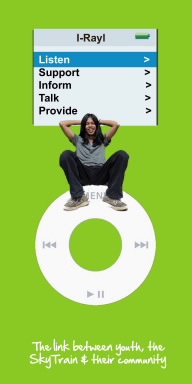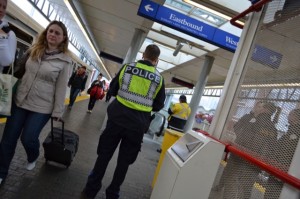Transit Police Academy – Week 4
Transit Police Academy – Week 4
I must say, of all the things I have learned thus far at Transit Police Academy, this week was my favourite.
As I said in the previous post, the two topics were recruiting and IRAYL.
If you’re interested in becoming a Transit Police officer, be prepared!
There are 14 different stages to a successful application and intake that leads to hiring and the police academy training.
This process is exactly like the other police departments in the region.
Transit Police is looking to hire from the same crop of applicants so having a similar application process across the board just makes sense.
But it’s important to note that while the majority of other police services address calls by car, Transit Police are beat-police.
They proactively patrol transit on foot which enables them to build relationships with customers, businesses and other stakeholders.
These relationships coupled with a highly visible presence on the transit system daily, enables Transit Police to address root causes of crime in and around transit in a proactive manner.
Transit Police gets about 70% of their applicants as new recruits meaning 30% are from other police departments.
Here are just some of the steps you need to complete in order to be considered:
- Participate in a ride-along
- Take, and pass, a written exam
- Provide 30 (yes, 30!) personal references on top of your work references
- Pass physical testing called the Police Officer Physical Ability Test
- In-person interviews
- Psychological evaluation
- Take a polygraph
What I thought was particularly interesting is how they really look at the whole package.
Why YOU want to get into policing, what makes up who you are and how you would fit within the police service.
So, if you end up passing all the tests with flying colours, you are hired and then sent to Police Academy.
Here, there are three blocks of training:
- Academic (13-14 weeks)
- Field Training (8-12 weeks)
- Academic (8-10 weeks)
Upon completion, you will then graduate and become a full-fledged Transit Police member. And if you make it, believe me, you deserve it!
Next up is something I could go on and on about so, please excuse me if I do.
It’s a wonderful program, the only of its kind, called IRAYL.
IRAYL is run out of Pacific Community Resources and funded by the BC Ministry of Children and Family Development.
Their goal is to connect at-risk youth with resources to help them be safe, healthy and assist the region’s most vulnerable groups and their families.
The four members of this outreach team are on and around the SkyTrain system, Monday to Friday for eleven hours each day.
They help bridge the gap between social workers and the youth by directing people to shelters, doctors, detox and rehabilitation centres, food banks, social programs and so much more!
On site, each IRAYL member will be highly visible and carry back packs that have snacks, juice, fresh socks and/or underwear and other necessity items that kids on the street often aren’t able to provide for themselves.
They work closely with Transit Police to not only make sure these youth are safe, but also ensure the safety of the rest of the public on the system.
For them, it’s all about building trusting relationships and helping people get out of unhealthy and oftentimes dangerous situations.
Personally, I wish there was funding for a team of 10, 20, 50, even 100 of these fantastic individuals who are able to reach out and provide hope and help for so many people.
They do incredible work and I was proud to meet them and hear the stories of their work.
The next session of Transit Police Academy is about the Professional Standards Unit who investigate complaints about police members and doing some tactical simulations in the combat room! Stay tuned!
Author: Adrienne Coling








Week 4 is a pivotal juncture in the Transit Police Academy program. At this point, recruits have already gained a foundational understanding of law enforcement procedures, but Week 4 introduces specialized knowledge and practical exercises tailored specifically to the unique demands of policing transit systems. https://www.activedumpsnet.com/Microsoft-dumps/AZ-500.html